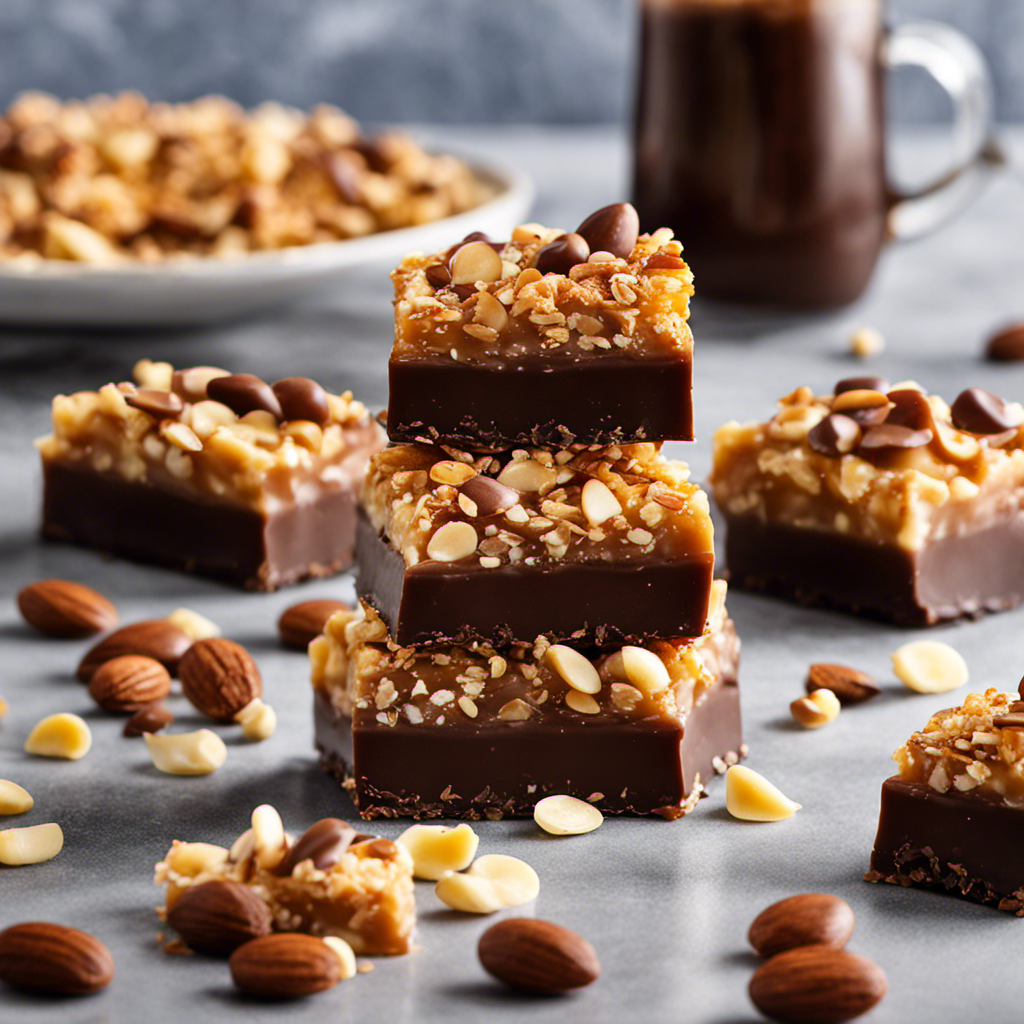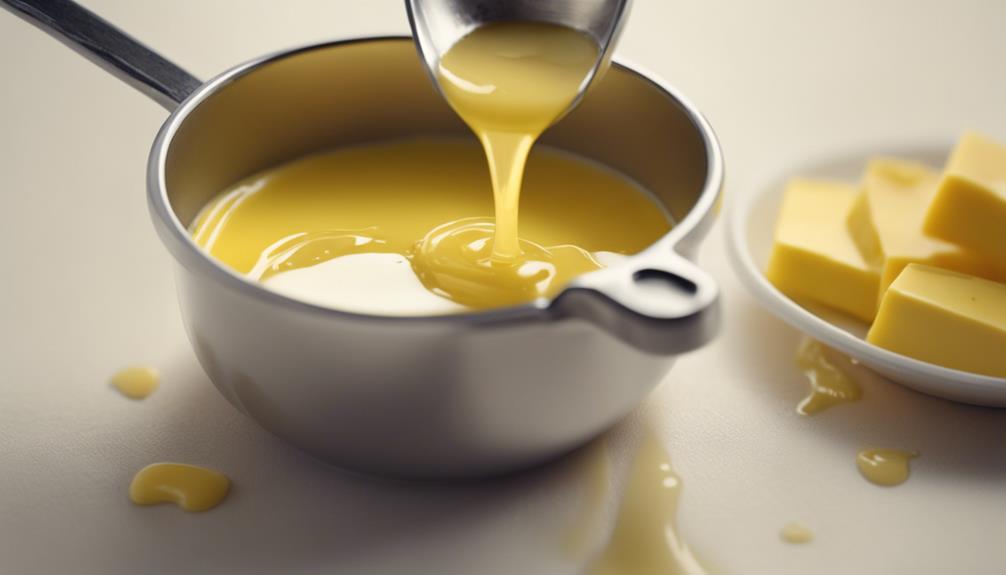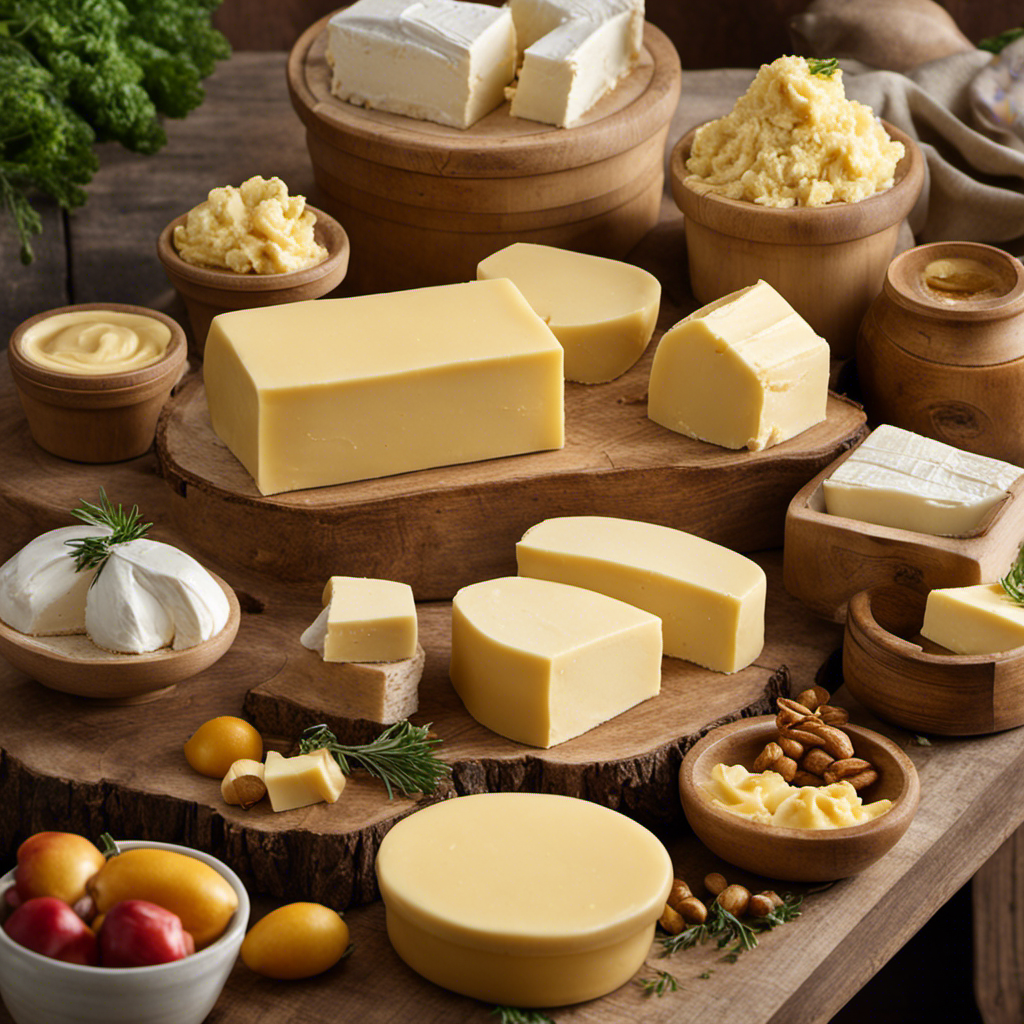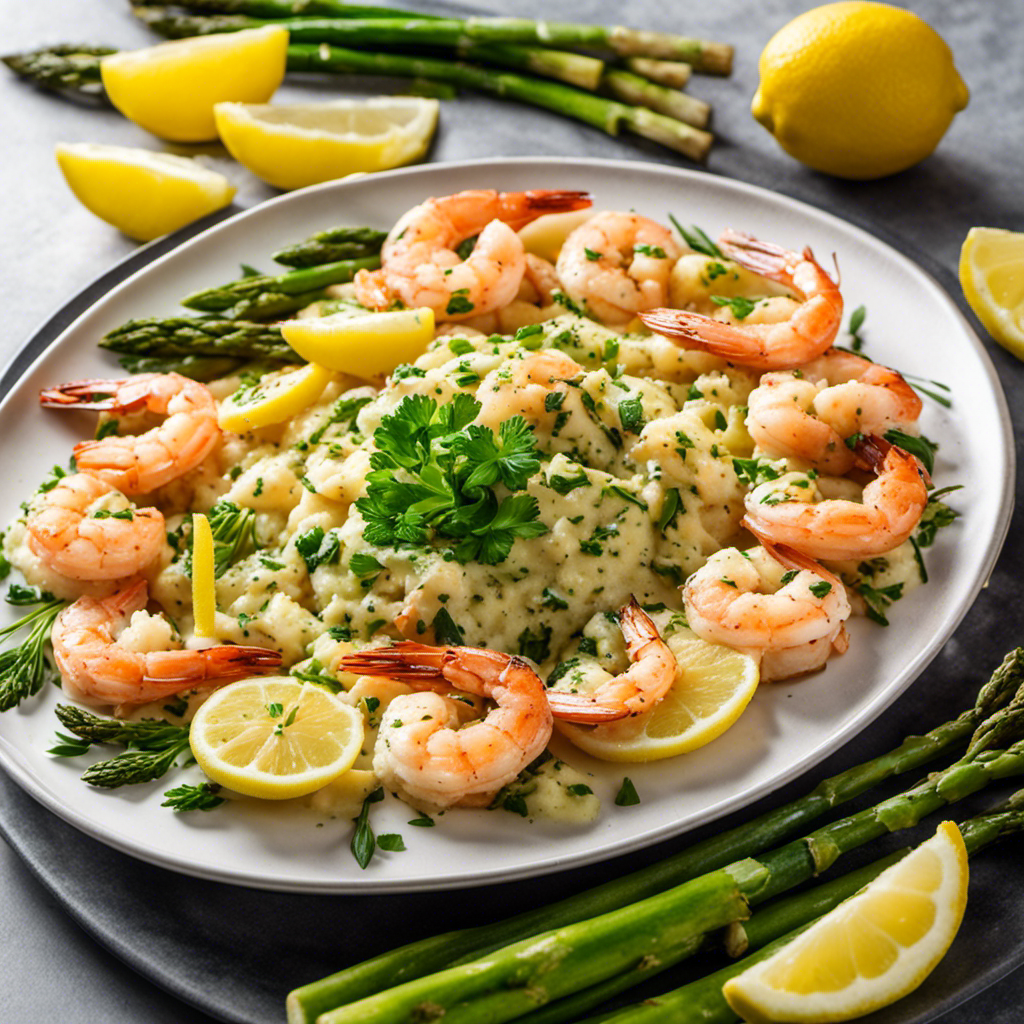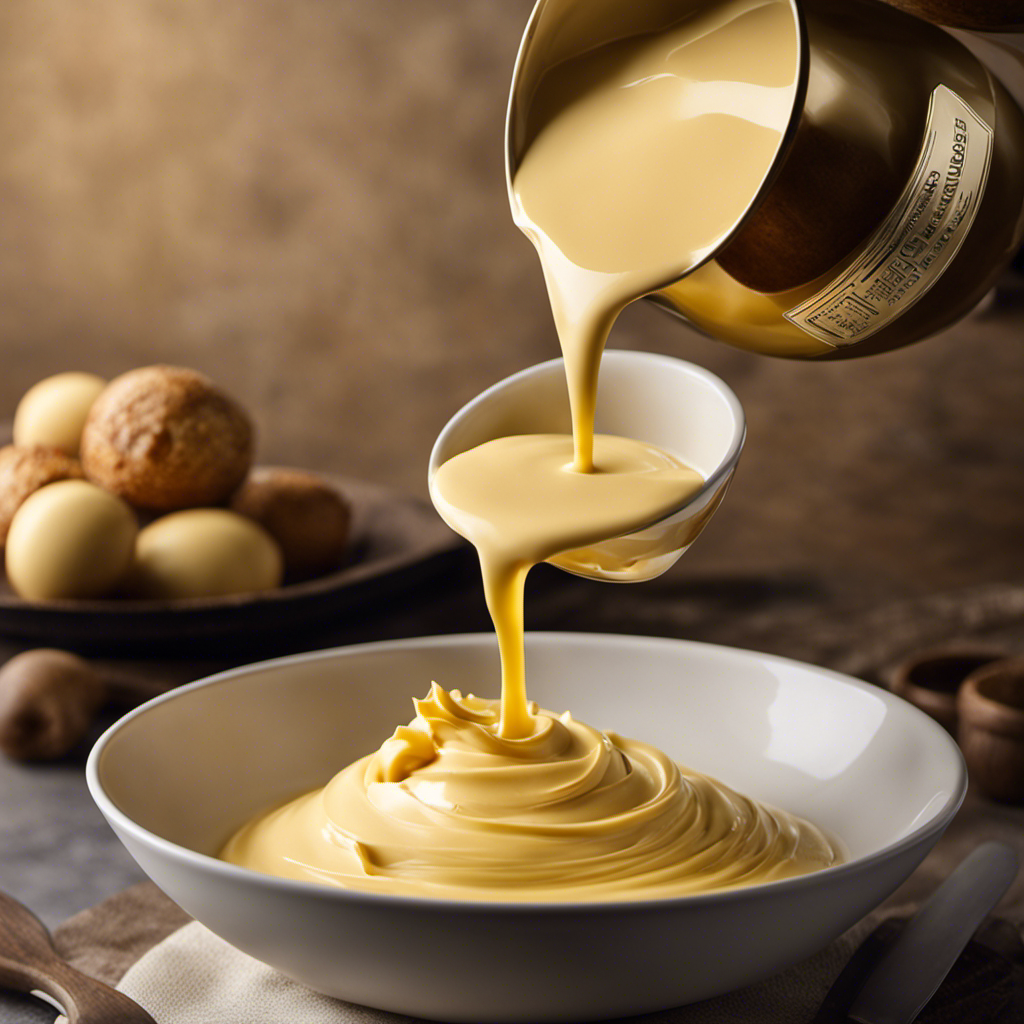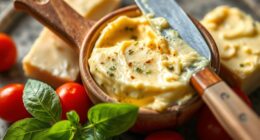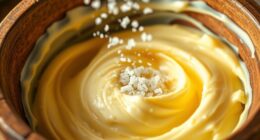Hey friend! Have you ever wondered why butter crunch tastes so good? Let me tell you why. It’s all about the delicious combination of creamy buttery goodness and a satisfying sweet crunch.
In this article, we’ll dive into the history, ingredients, and process of making butter crunch. We’ll also explore different variations of recipes, offer tips for achieving the perfect butter crunch, and even compare it to other similar treats.
Get ready to indulge in the world of butter crunch!
Key Takeaways
- Butter crunch is a popular treat that originated in the late 19th century, combining buttery toffee and crunchy nuts.
- The process of making butter crunch involves cooking butter, sugar, and sometimes corn syrup together to create a caramelized toffee.
- Variations of butter crunch can include different types of nuts, flavors like vanilla or cinnamon, and even the addition of chocolate.
- Butter crunch has a distinctive texture that is both crunchy and buttery, and it offers a rich and buttery flavor that is balanced with sweetness. It can be enjoyed on its own or used as a topping or mix-in for various desserts.
History of Butter Crunch
The history of butter crunch dates back to the late 19th century. It all began with the invention of caramel candies, which became widely popular during that time. As people started experimenting with different types of toffee, they discovered a delicious combination of buttery toffee and crunchy nuts, giving birth to the mouthwatering treat we now know as butter crunch.
This delectable candy quickly gained popularity and became a staple in many households. Today, butter crunch is loved for its rich, buttery flavor, the perfect balance of sweetness, and the satisfying crunch that comes from the caramelized toffee.
Now that we know the history behind this delightful treat, let’s dive into the next section and explore the ingredients used in making butter crunch.
Ingredients Used in Butter Crunch
One of the key ingredients in butter crunch is brown sugar. It adds a rich, caramel flavor to the candy, making it even more irresistible.
Butter crunch is a type of toffee that is made by cooking together butter, sugar, and sometimes corn syrup. Once the mixture reaches the desired temperature, it is poured onto a baking sheet and left to cool and harden.
There are different types of butter crunch recipes. Some include nuts like almonds or pecans, while others may incorporate chocolate for an extra indulgent treat.
In terms of health benefits, butter crunch should be enjoyed in moderation due to its high sugar and fat content. However, it can provide a quick burst of energy and a satisfyingly sweet treat on occasion.
The Process of Making Butter Crunch
To make this delicious treat, start by melting the butter in a saucepan over medium heat. Once the butter is melted, add in the sugar and corn syrup, stirring constantly until the mixture reaches a boil.
At this point, insert a candy thermometer into the mixture and continue to cook until it reaches a temperature of 300 degrees Fahrenheit. This is the crucial step in creating the perfect texture for the butter crunch.
Once the mixture reaches the desired temperature, remove it from the heat and stir in the vanilla extract and baking soda. Be prepared for the mixture to foam up a bit due to the baking soda.
Pour the hot mixture onto a greased baking sheet and spread it out evenly. Let it cool completely before breaking it into bite-sized pieces.
The result is a delectable buttery, crunchy treat that is perfect for snacking or gifting.
Variations of Butter Crunch Recipes
There are numerous ways to modify recipes for butter crunch to create unique and flavorful variations.
One classic butter crunch variation is to add chopped nuts, such as almonds or pecans, to the recipe. The crunchiness of the nuts adds an extra layer of texture to the buttery sweetness of the candy.
Another delicious variation is to incorporate different flavors into the butter crunch, such as vanilla, cinnamon, or even coffee. These additions can give the candy a whole new dimension of taste.
For those who follow a vegan lifestyle, there is also the option of making a vegan butter crunch. Instead of using dairy butter, you can use vegan butter substitutes made from plant-based oils. This allows everyone to enjoy the irresistible taste of butter crunch, regardless of dietary preferences.
Tips for Perfect Butter Crunch
When it comes to making the perfect butter crunch, there are a few key points to keep in mind.
First, cooking temperature and timing are crucial for achieving that perfect balance of caramelization and crunchiness.
Second, choosing the right ingredients, such as high-quality butter and fresh nuts, can make all the difference in the flavor and texture of your butter crunch.
Lastly, adding delicious variations, like a sprinkle of sea salt or a drizzle of dark chocolate, can take your butter crunch to the next level and make it truly irresistible.
Cooking Temperature and Timing
Keep an eye on the cooking temperature and timing while making butter crunch to ensure it turns out perfectly. Cooking techniques are crucial when making this delectable treat.
Here are some troubleshooting tips to help you along the way:
-
Maintain a steady heat: Use a candy thermometer to accurately measure the temperature of the mixture. This will ensure that the butter crunch reaches the right temperature for that perfect crunch.
-
Watch the color: Pay attention to the color of the mixture as it cooks. It should turn a golden brown hue, indicating that the sugar has caramelized and the butter has infused the candy.
-
Time it right: Timing is everything when it comes to making butter crunch. Be sure to follow the recipe instructions carefully and keep an eye on the clock to avoid overcooking or undercooking the candy.
Choosing the Right Ingredients
To make the perfect batch of butter crunch, you should choose the right ingredients. When it comes to choosing ingredients, quality is of the utmost importance. The butter you use should be high-quality and unsalted, as this will give your butter crunch a rich and creamy flavor. Additionally, using a high-quality sugar will ensure that your butter crunch has a smooth and delicious taste.
It’s also important to choose the right type of nuts for your butter crunch. Whether you prefer almonds, pecans, or walnuts, make sure they are fresh and of good quality. These ingredients work together to create a delectable butter crunch that will leave you craving more.
Now that we’ve covered the importance of choosing the right ingredients, let’s move on to adding delicious variations to your butter crunch.
Adding Delicious Variations
You can get creative with your toppings by adding different flavors like chocolate, peanut butter, or even a sprinkle of sea salt.
Here are three delicious variations to try on your butter crunch:
-
Chocolate Delight: Melt some dark or milk chocolate and drizzle it over your butter crunch. Watch as the rich, velvety goodness envelops each crunchy piece, creating a heavenly blend of flavors.
-
Peanut Butter Bliss: Spread a layer of creamy peanut butter on top of your butter crunch. The combination of the sweet, buttery crunch with the nutty, savory notes of peanut butter is simply irresistible.
-
Sea Salt Surprise: Sprinkle a pinch of sea salt over your butter crunch. The contrast between the sweet caramelized butter crunch and the subtle hint of saltiness creates a delightful balance of flavors that will leave your taste buds wanting more.
With these different types of flavor combinations, you can take your butter crunch to a whole new level of deliciousness. So go ahead, experiment and indulge in the wonderful world of butter crunch toppings!
Serving and Storing Butter Crunch
When it comes to serving butter crunch, there are a few suggestions that can elevate the experience.
I’ll share some tips on how to present this delightful treat in a way that is both visually appealing and enticing to the taste buds.
Additionally, I’ll provide guidance on proper storage techniques to ensure your butter crunch stays fresh and delicious for as long as possible.
Serving Suggestions for Crunch
For a tasty twist on serving suggestions, try drizzling some chocolate sauce over the butter crunch. The combination of the rich, smooth chocolate and the crunchy, buttery sweetness of the butter crunch creates a delectable flavor explosion in your mouth.
Here are three flavor combinations that will take your butter crunch to the next level:
-
Salted Caramel: Drizzle some homemade salted caramel sauce over the butter crunch for a perfect balance of sweet and salty. The caramel adds a luscious, gooey texture that complements the crunch of the butter.
-
Peanut Butter: Spread a layer of creamy peanut butter on top of the butter crunch for a delightful blend of nutty and buttery flavors. The creamy peanut butter adds a smoothness that enhances the overall taste.
-
Espresso: Sprinkle some finely ground espresso beans over the butter crunch to add a hint of bitterness and a burst of coffee flavor. The combination of the rich butter crunch and the bold espresso creates a perfect harmony of taste.
Proper Butter Crunch Storage
To keep butter crunch fresh and crispy, store it in an airtight container or zip-top bag. This ensures that the deliciousness of this irresistible treat is preserved for as long as possible.
Butter crunch is a delectable combination of butter, sugar, and nuts, making it a truly indulgent treat. There are countless butter crunch recipes out there, each with its own unique twist. From adding chocolate drizzle to incorporating different types of nuts, the flavor variations are endless.
Whether you prefer a classic butter crunch or want to experiment with exciting flavors, there is a recipe out there to satisfy your taste buds.
Now, let’s delve into the world of butter crunch vs. other similar treats and discover what sets this delightful treat apart.
Butter Crunch Vs. Other Similar Treats
Have you tried butter crunch? It’s a delicious treat that stands out from other similar snacks. Here are three reasons why butter crunch is a cut above the rest:
-
Texture: Unlike traditional toffee, butter crunch has a unique texture that is both crunchy and buttery. With each bite, you’ll experience a delightful combination of a satisfying crunch and a smooth, melt-in-your-mouth sensation.
-
Flavor: Butter crunch offers a rich, buttery flavor that is distinct from the sweetness of toffee. It’s the perfect balance of savory and sweet, making it a truly irresistible treat.
-
Versatility: While peanut brittle is known for its nutty taste, butter crunch offers a versatility that can’t be matched. You can enjoy it on its own, or use it as a topping for ice cream, cakes, or even as a mix-in for cookies.
Frequently Asked Questions
Can Butter Crunch Be Made Without Using Nuts?
Yes, butter crunch can be made without using nuts. There are various recipes that incorporate alternative ingredients such as seeds or dried fruits. These variations provide a delicious twist to the classic butter crunch recipe.
Can I Substitute the Butter in the Recipe With Margarine?
Substituting margarine in a butter crunch recipe is possible, but there are pros and cons to consider. Margarine can alter the taste and texture, so it’s important to experiment and find the best balance for your preferences.
Is Butter Crunch Gluten-Free?
Is butter crunch safe for people with celiac disease? Is it suitable for a gluten-sensitive diet? Butter crunch is typically made with butter, sugar, and nuts, which are gluten-free ingredients.
How Long Does It Take to Make Butter Crunch?
It takes about 30 minutes to make butter crunch. To store it for maximum freshness, keep it in an airtight container at room temperature. For added flavor variations, try adding nuts or a drizzle of chocolate.
Can I Freeze Butter Crunch for Later Consumption?
Sure, you can freeze butter crunch for later munching. I’ll share the best freezing methods and the benefits of doing so. It’s a great way to keep your butter crunch fresh and ready whenever cravings strike.
Conclusion
As I take the last bite of this delectable butter crunch, I am transported to a realm of pure bliss. The rich, buttery flavor melts on my tongue like a golden sunset, while the crunchy texture dances like a symphony in my mouth.
This heavenly treat, born from a perfect marriage of sugar, butter, and love, is a true masterpiece. With its countless variations and endless possibilities, butter crunch stands tall among other desserts, a shining star in the culinary galaxy.
So indulge yourself in this sweet symphony and let your taste buds embark on a magical journey.
